1. Functions of Network Services
2. Protocols and Ports
2.1. Ports
2.1.1. A number assigned by the operating system to a process (application)
2.1.2. Ports are most commonly used by TCP and UDP
2.1.3. TCP or UPD can have multiple sessions (connections) at the same time
2.1.4. Ports identify the upper layer protocol (HTTP, FTP, Telnet, etc..) that TCP or UDP is carrying
2.1.5. SOCKET. A port in use is a socket.
2.1.5.1. A combination of protocol, IP address, and port
2.2. Protociols
2.2.1. Connection-Oriented Protocol
2.2.1.1. Uses a handshake to create and end a session. Ensure reliability and completeness of transmission
2.2.1.2. Used when reliability is more important than performance
2.2.2. Connection-less Protocol
2.2.2.1. Opposite to everything above. Used when performance is more important reliability.
2.3. TCP/IP Suite
2.3.1. 6 suites
2.3.1.1. TCP, UDP, IP, ICMP, IGMP, ARP
2.3.1.1.1. All but ARP have an IANA assigned protocol number (protocol ID)
3. OSI Model
3.1. PDU
3.1.1. Data
3.1.2. Segment
3.1.3. packet
3.1.4. frame
3.1.5. Datagram
3.1.6. bit
3.2. OSI
3.2.1. 7 Application: Request service. HTTP DHCP DNS SNMP
3.2.1.1. Remote Control Protocols
3.2.1.1.1. Telnet TCP 23
3.2.1.1.2. SSH TCP 22
3.2.1.1.3. Remote Desktop Protocol (RDP) TCP 3389
3.2.1.2. File Transfer Protocols
3.2.1.2.1. Server Message Block (SMB)
3.2.1.2.2. File Transfer Protocol
3.2.1.2.3. Trivial File Transfer Protocol (TFTP)
3.2.1.2.4. Secure File Transfer Protocol (SFTP)
3.2.1.3. Messaging Protocol
3.2.1.3.1. Simple Mail Transfer Protocol (SMTP)
3.2.1.3.2. Post Office Protocol (POP3)
3.2.1.3.3. Internet Message Access Protocol (IMAP4)
3.2.1.4. Web Traffic Protocol
3.2.1.4.1. Hyper Text Transfer Protocol (HTTP)
3.2.1.4.2. Hyper Text Transfer Protocol Secure (HTTPS)
3.2.1.5. Streaming Media
3.2.1.5.1. Session Initiation Protocol (SIP)
3.2.1.5.2. H.323
3.2.1.6. Infrastructure Management Protocols
3.2.1.6.1. Dynamic Host Configuration Protocol (DHCP)
3.2.1.6.2. Domain Name System (DNS)
3.2.1.7. Simple Network Management Protocol (SNMP)
3.2.1.7.1. monitor and manage devices on networks using management information base (MIB)
3.2.1.7.2. v1, v2, v2c are clear text; v3 encrypted
3.2.1.8. Network Time Protocol (NTP)
3.2.1.8.1. Widely deployed time synchronization service
3.2.1.9. Lightweight Directory Access Protocol (LDAP)
3.2.1.9.1. TCP 389
3.2.2. 6 Presentation (Formats): Negotiate formats like Encrypt AES MD5 , Multimedia JPG GIF PDF , Charsets ASCII Unicode, Compression H.264 MPEG-4
3.2.3. 5 Session (Conversation): separate conv. First concept of communication. Assigning ports (source + destination) to conversation.
3.2.4. 4 Transport (TCP UDP): Abstract mechanics of network. Layer 4 host to host protocol. Establish., Manage, Teardown. First layer to encapsulate data with header. Payload of Internet Protocol. Tells sender how big the receiver’s buffer is from segment to segment using a receive (sliding) window.
3.2.4.1. TCP
3.2.4.1.1. 1. Breaks data into segments
3.2.4.1.2. 2. Add sequence numbers to segments
3.2.4.1.3. 3. Embeds source + destination ports into its header
3.2.4.1.4. 4. Establishes the session with a handshake
3.2.4.1.5. 5. Error correction + flow control during session
3.2.4.1.6. 6. Tears down session with a handshake
3.2.4.2. UDP
3.2.4.2.1. 1. Embeds source + destination ports into its header
3.2.4.2.2. 2. Depends on the application for session establishment, management, error correction, flow control, and tear down
3.2.5. 3 Network: Logical address IP, ICMP, IGMP
3.2.5.1. Encapsulates layer 4 payload with layer 3 header
3.2.5.2. Adds IP
3.2.5.3. Chooses the best route
3.2.5.4. IP, ICMP, IGMP
3.2.5.4.1. Internet Control Message Protocol (ICMP)
3.2.5.4.2. Internet Group Management Protocol (IGMP)
3.2.5.5. Routers, Firewalls, multi-layer switches
3.2.6. 2 Data Link: Fomat data, MAC. LAN WAN
3.2.6.1. Discards frames that do not pass a simple cyclical redundancy check (CRC)
3.2.6.2. The 2 sub-layers
3.2.6.2.1. Logical Link Control (LLC) – describes the Layer 3 payload. Encapsulates Layer 3 packet into a frame
3.2.6.2.2. Media Access Control (MAC) – puts on the physical source and destination addresses
3.2.6.3. ARP, Ethernet, Token Ring, PPP, HDLC, Frame Relay
3.2.6.3.1. Address Resolution Protocol (ARP)
3.2.6.4. Switches, bridges
3.2.7. 1 Physical: 0s 1s, All physical.
